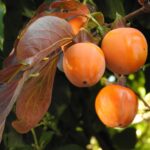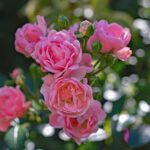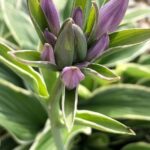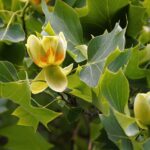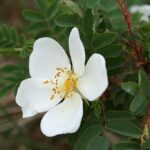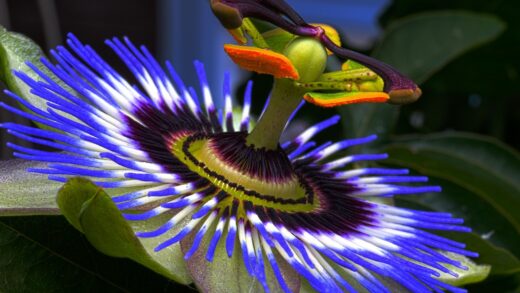The glaucous cotoneaster, scientifically known as Cotoneaster glaucophyllus, is an extremely popular and versatile ornamental shrub, captivating gardens with its dense, arching branch system, glaucous green foliage, and vibrant red berries that adorn it in autumn. Although it is generally considered a very low-maintenance, hardy plant that thrives in most soil types, proper nutrient supply is essential for achieving and maintaining abundant flowering, intensive fruit yield, and healthy, dense foliage. A consciously planned and implemented fertilization program not only enhances the plant’s aesthetic value but also contributes to increasing its resistance to diseases and pests. Ensuring an optimal level of nutrients guarantees that the shrub will display its most beautiful form in every season.
The very first and most important step in caring for the glaucous cotoneaster is selecting the right growing site, which is closely related to the plant’s ability to absorb nutrients. This species prefers well-drained, loose to medium-textured soils that are moderately rich in nutrients. Excessively heavy, clayey, waterlogged soils can lead to root rot, which inhibits the uptake of water and nutrients, while nutrients can quickly leach from extremely loose, sandy soils. The ideal soil pH ranges from neutral to slightly alkaline, between pH 6.0 and 7.5. If the soil is too acidic, amending it with lime before planting is recommended to adjust the pH to the appropriate level.
Improving soil structure is crucial for the healthy development of the glaucous cotoneaster, as the right structure provides the necessary air and water for the roots. The regular application of organic matter, such as mature compost or high-quality, well-rotted manure, is extremely beneficial. These materials not only enrich the soil with slow-release nutrients but also improve its water-holding capacity in sandy soils and loosen its structure in heavier, clayey soils. By stimulating soil life, they contribute to the creation of a healthier root zone, which is a fundamental condition for nutrient utilization.
The glaucous cotoneaster is a relatively drought-tolerant plant once properly established, but prolonged periods of drought can cause it stress, which can reduce the efficiency of nutrient uptake. Regular but moderate watering is particularly important during the first year after planting, as well as during the flowering and fruit-setting periods. Adequate water supply ensures that the nutrients dissolved in the soil remain in a form available to the plant and are transported through the roots to the rest of the plant. Coordinating irrigation and fertilization is therefore essential for successful care, avoiding the leaching of nutrients from the root zone.
The most important nutrients and their roles
The essential nutrients for plants can be divided into two main groups: macronutrients and micronutrients, each of which plays a fundamental role in the life processes of the glaucous cotoneaster. The three most important macronutrients are nitrogen (N), phosphorus (P), and potassium (K), which the plant requires in the largest quantities. Nitrogen is responsible for the growth of green mass, leaves, and shoots; phosphorus is essential for root formation, flowering, and fruit set; while potassium promotes overall resilience, frost and drought tolerance, and regulates water management. A balanced ratio of these elements ensures the harmonious development of the plant.
More articles on this topic
Nitrogen (N) is a key component of chlorophyll and numerous enzymes, so its deficiency produces the most spectacular symptoms. A nitrogen-deficient cotoneaster’s growth slows down, its leaves, especially the older ones, begin to turn yellow (chlorosis), and the overall appearance of the shrub becomes weak with sparse foliage. However, an overdose of nitrogen should also be avoided, as it results in excessively lush, weak shoot growth at the expense of flowering and fruit set. Such shoots are more susceptible to aphid attacks and fungal diseases, and are also more sensitive to winter frosts.
Phosphorus (P) is the central element of energy metabolism, essential for the formation of new cells, making its role in the development of the root system and flower buds outstanding. In the case of phosphorus deficiency, the root system develops poorly, flowering may be absent or sparse, and fruit set is significantly reduced. The leaves often take on a darker green, sometimes purplish hue, and growth is generally inhibited. Potassium (K), on the other hand, is the plant’s “quality” nutrient, improving its stress tolerance by strengthening cell walls, regulating water balance, and activating enzymes. In case of potassium deficiency, yellowing, followed by browning and death (necrosis), can be observed along the leaf margins.
Although the glaucous cotoneaster requires them in smaller quantities, a deficiency of micronutrients such as iron (Fe), manganese (Mn), zinc (Zn), and magnesium (Mg) can also cause serious problems. Magnesium is the central atom of the chlorophyll molecule, and its deficiency causes interveinal yellowing (the leaf veins remain green) on older leaves, similar to nitrogen deficiency. Iron and manganese deficiency also cause chlorosis, but it primarily appears on young, fresh shoots, especially in calcareous, high-pH soils where these elements are present in a form that is difficult for the plant to absorb. An application of iron chelate as a foliar spray can provide a quick and effective solution when such symptoms appear.
The practice of fertilization: timing and methods
The timing of fertilization is crucial for achieving maximum effectiveness and should be closely aligned with the glaucous cotoneaster’s vegetation cycle. The most important period for general nutrient supply is spring, at the beginning of the growing season, when the plant begins its intensive growth. A balanced, slow-release, complex fertilizer applied in early spring, during March-April, is an ideal choice. These products gradually provide the necessary macro- and micronutrients over several months, avoiding a sudden nutrient shock and the risk of burning the roots. Instead of products high in nitrogen, look for a formula with a balanced NPK ratio or one slightly higher in phosphorus and potassium.
More articles on this topic
The combined application of organic and mineral fertilizers represents the most sustainable and effective approach to feeding the glaucous cotoneaster. Organic materials, such as mature compost, granulated cow manure, or mushroom compost, are not only slow-release nutrient sources but also significantly improve soil structure, water retention capacity, and biological activity. In spring, in addition to the mineral fertilizer, a 2-3 cm thick layer of compost spread around the base of the shrub and lightly incorporated into the top layer of soil will ensure long-term soil fertility. This method helps to create a more buffered, healthier environment for the roots.
The method of fertilizer application also influences its utilization. Granular and organic fertilizers should be spread evenly over the entire area under the plant’s canopy, in the so-called drip zone, avoiding direct contact of the granules with the trunk or thick roots. After application, the fertilizer should be lightly worked into the soil with a hoe or rake, and then the area should be thoroughly watered. This process helps the nutrients to dissolve and move down into the root zone, where the plant can absorb them. Foliar fertilizers can be a quick fix for deficiency symptoms, but they do not replace proper feeding through the soil.
As the growing season comes to an end, in late summer or early autumn (late August, September), the fertilization strategy changes. During this period, the use of high-nitrogen products should be avoided, as they would stimulate the growth of new, tender shoots that would not have time to mature before winter, making them susceptible to frost damage. Instead, an application of a low-nitrogen, high-potassium “autumn” fertilizer is recommended. Potassium helps the shoots to mature, strengthens the tissues, and increases the plant’s preparedness for the cold of winter, contributing to a healthy start the following spring.
Special situations and the dangers of over-fertilization
Newly planted glaucous cotoneaster shrubs have different nutrient requirements than established, mature specimens that have been in place for years. In the first year after planting, the primary goal is to promote the development of a robust and extensive root system, not to force foliage growth. Consequently, a starter fertilizer high in phosphorus mixed into the planting hole or a dose of mature compost is the most ideal choice. The use of high-nitrogen fertilizers at planting time should be avoided, as they can burn the sensitive new roots and shift energy use towards shoot growth instead of root establishment.
Glaucous cotoneaster grown in containers or pots requires special attention regarding nutrient supply. Nutrients are depleted relatively quickly from the limited volume of growing medium and are also leached out by regular watering. For this reason, potted plants need to be fertilized more frequently than their counterparts planted in the open ground. During the growing season, from spring to late summer, a balanced liquid fertilizer applied every 4-6 weeks at the recommended concentration or slightly more diluted is suggested. Alternatively, a long-lasting, controlled-release granular fertilizer mixed into the growing medium at the beginning of the season also works excellently.
It is important to recognize that yellowing leaves or poor growth are not always a consequence of nutrient deficiency. Before automatically reaching for the fertilizer, it is worth investigating other possible causes, such as overwatering, root suffocation due to waterlogging, excessive soil compaction, the presence of pests, or some kind of disease. The most reliable method for determining the nutrient content and pH of the soil is a laboratory soil test, which provides precise guidance on the necessary interventions. Unfounded fertilization is not only wasteful but can also be harmful to the plant and the environment.
Over-fertilization can be at least as harmful as nutrient deficiency, and often causes problems that are more difficult to remedy. An excessive amount of fertilizer, especially nitrogen, can “burn” the roots, leading to the plant wilting and, in severe cases, its death. In addition, it can dangerously increase the salt concentration of the soil, which inhibits water uptake. Excess nutrients leached into the groundwater pose an environmental burden. The golden rule of “less is sometimes more” also applies to the glaucous cotoneaster. A considerate nutrient supply, tailored to the plant’s condition and the soil’s characteristics, is the key to long-term health and magnificent ornamental value.




